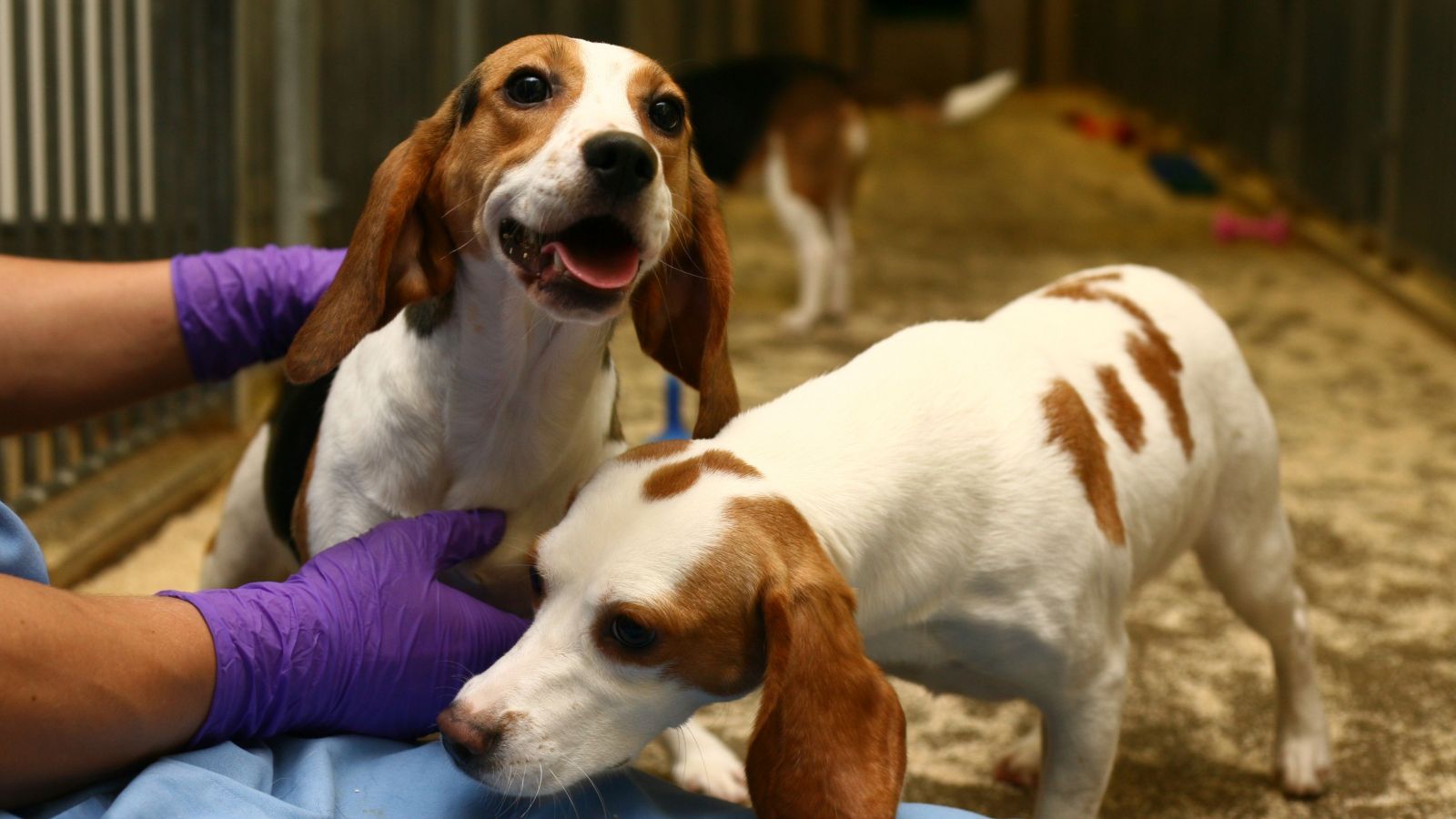Read our Dog Testing FAQ
Our new Dog FAQ page provides answers to the most frequently asked questions about dogs in research.
Dogs (Canis familiaris) belong to the family Canidae and are thought to be one of the first domesticated animals. They have been used in research for more than a century, however, they are currently very rarely used in animal research in Great Britain, only being used in 0.24% of experimental procedures in 2019 (latest published figures).
They are medium-sized mammals that can grow from 15 to 100 cm and weigh from 1.5 to 75 kg, depending on the type of dog. Dogs are carnivores but can thrive on a well-designed suitably processed omnivorous diet in the domestic situation.
Why are dogs used in research?
Dogs have been very useful research models for such a long time for many reasons. One of the reasons that dogs are physiologically quite similar to humans, they also have roughly the same number of genes as humans, and their genome has been sequenced. This makes dogs particularly useful in genetic studies. Dogs are also known to suffer from similar diseases as humans such as diabetes, epilepsy, autoimmune diseases, cancers, and eye diseases. Dogs can also be trained to cooperate in the research, learning to jump onto weighing benches and to accept muzzles in respiratory research for example. You can see this in this film about asthma drug research.
What types of research are dogs used in?
The physiological similarities between humans and dogs mean that they are useful in various types of research. Their genome has been sequenced and because of our genetic similarities, they are often used in genetic studies.
Dogs are primarily used in regulatory research, also known as toxicology or safety testing. This type of research is required by law to test the safety and effectiveness of potential new medicines and medical devices before they are given to human volunteers during clinical trials. Dogs are also used to test the safety and efficacy of veterinary medicines, and also in nutrition studies to ensure that pet dogs eat healthily, particularly when they are prescribed specialist diets by their vets.
A smaller number of dogs are also used in translational research (also called applied research) to help us learn about human and animal diseases so that we can develop treatments. Examples of translational diseases can be found below.
Dogs are also used to study Duchenne muscular dystrophy (DMD), which is the most common type of muscular dystrophy. It is another condition that can affect both humans and dogs. Because dogs can naturally have this condition, they can be studied to show how the condition progresses. This very useful model for DMD has helped scientists work on better genetic tests and treatments for the condition.
An early use of dogs in research was in the search for a treatment for diabetes, which resulted in the discovery of insulin. This discovery in the 1920s, which won researchers a Nobel prize, now allows people with diabetes to live long lives. In the past, people with diabetes would die soon after developing the condition.
How are the dogs looked after?
The use of animals in research is highly regulated, an important part of that regulation is ensuring the animals are housed and cared for correctly. Laboratory dogs are housed in enclosures that can isolate individual dogs for treatment but usually opened up for dogs to interact. Dogs’ need to socialise is well considered, so the dogs are housed in small groups most of the time. The facilities usually also have space to run around for exercise and you can usually find dogs interacting with each other, environmental enrichments, and the animal technicians.
https://www.nc3rs.org.uk/3rs-resources/housing-and-husbandry/housing-and-husbandry-dogs
You can see this in this film about dogs in research.
References
https://www.nationalgeographic.com/animals/mammals/d/domestic-dog/
https://www.britannica.com/animal/dog/Breed-specific-behaviour#ref15478
http://www.animalresearch.info/en/designing-research/research-animals/dog/




